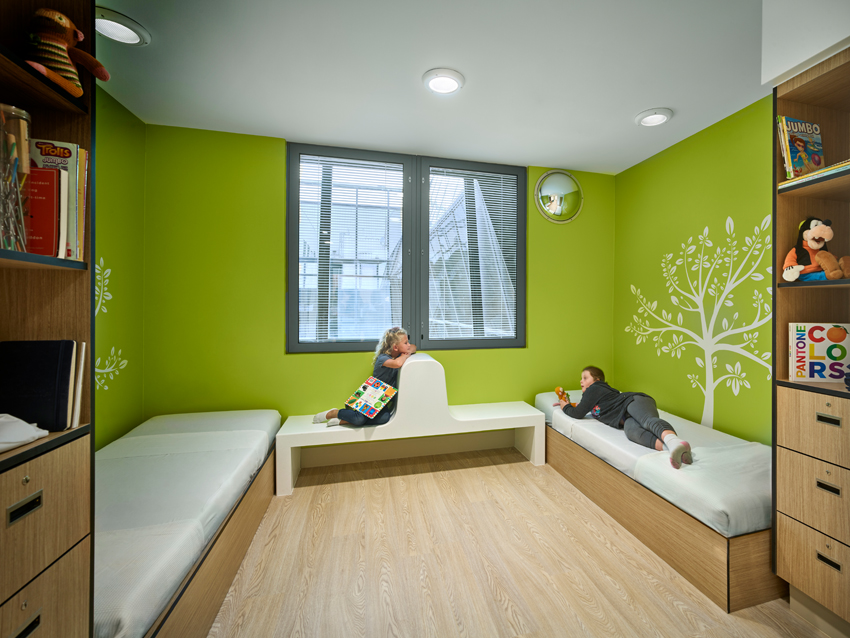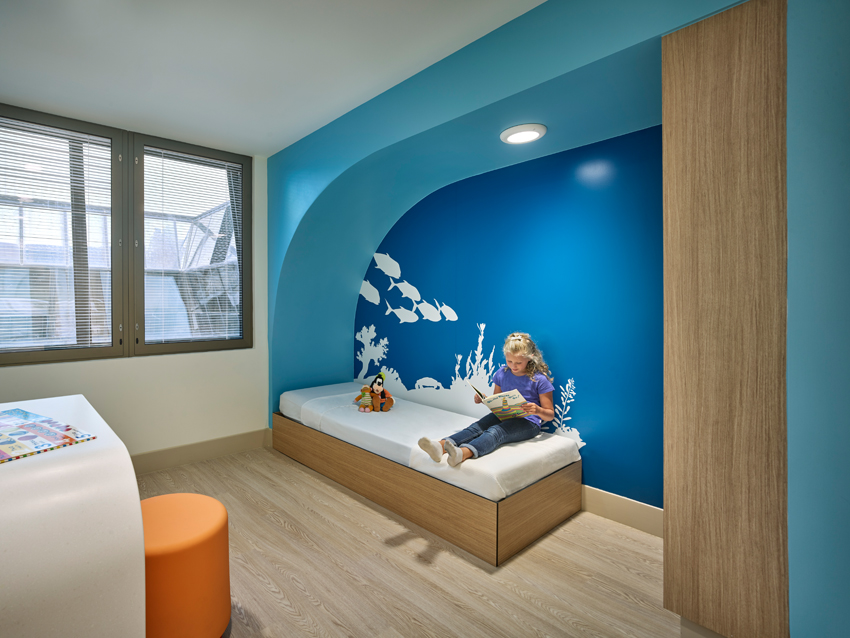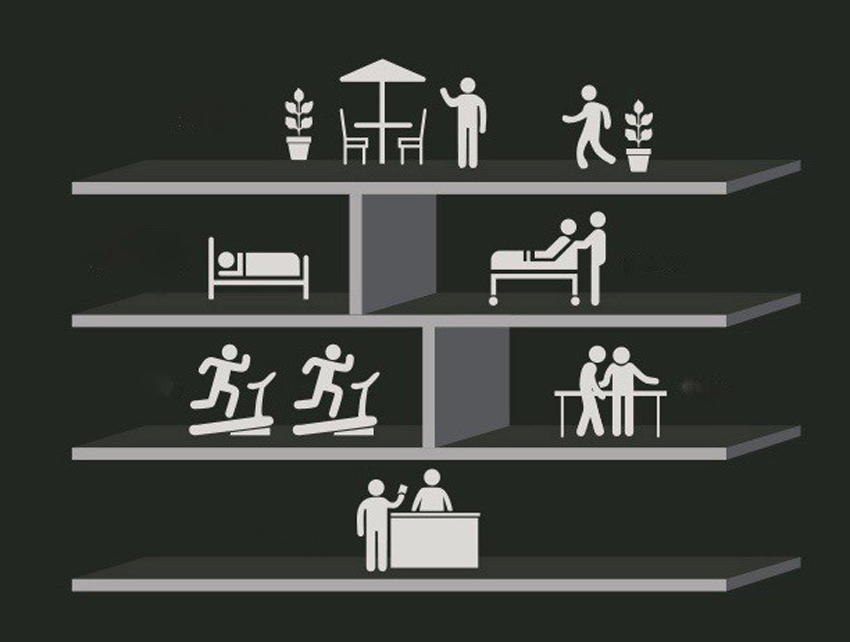Secondhand Noise: Can Flooring Solve the Problem?
Learning Objectives:
- Explain how noise is a major public health issue comparable to secondhand smoke.
- Discuss current noise-control approaches in the United States that are not adequately addressing the issue or leading to significant improvements.
- Describe how noise is perceived versus how it is measured, as well as how it moves through a building.
- Define the role of flooring in reducing noise in the built environment.
- Review case studies that illustrate the specification of flooring to create a superior acoustical environment.
Credits:
This course is approved as a Structured Course
This course can be self-reported to the AANB, as per their CE Guidelines
Approved for structured learning
Approved for Core Learning
This course can be self-reported to the NLAA
Course may qualify for Learning Hours with NWTAA
Course eligible for OAA Learning Hours
This course is approved as a core course
This course can be self-reported for Learning Units to the Architectural Institute of British Columbia
Inside a building, nobody loves noise. But in certain environments—among them health-care facilities, multifamily housing, and fitness centers—the noise of clanging, banging, footfall, voices, and machinery can be pervasive and seemingly uncontrollable.
Noise is what Whitney Hendrickson expected to find when she toured the renovation of an intensive care unit (ICU) in Pennsylvania Presbyterian Hospital in Philadelphia. Instead, what she found was an unusual quiet.

All images courtesy of Ecore
Noise generated within a building is a problem that the flooring specification can help solve.“As soon as we walked into that unit, it was so eerie because it was unexpectedly quiet,” says Hendrickson, an interior designer and registered nurse. “My eyes and ears did not match up. I thought they must not have had many patients—but they did. You could see staff moving around, carts being pushed down the corridors, and yet I did not hear what I normally hear in an ICU.”
This is because Hendrickson was experiencing the acoustic benefits of a next-level engineered flooring made just for medical settings where vinyl is fusion bonded to a vulcanized composition rubber backing. The specialized flooring not only reduces noise, but it also provides an ergonomic and resilient surface for both staff and patients.
And so, when Hendrickson was designing the expansion and renovation of the neonatal intensive care unit (NICU) at Methodist Mansfield Medical Center in Mansfield, Texas, she knew she wanted to specify the same noise-reducing flooring.
Advanced noise-dampening flooring was also specified for a library in Las Vegas, a fitness center at the University of Southern California (USC), and a fitness center in a multifamily building in San Diego, among many other noise-challenged settings.
To understand why and how to specify flooring for noise reduction, it is important to understand the massive negative impact noise has on public health, how noise travels throughout a building, and how flooring stops it at the source. With this knowledge, specifying flooring to reduce noise at the source emerges as the most straightforward and cost-effective solution to the problem of impact noise generated inside buildings.

Noise is not just annoying, but it is also actually damaging to public health.
Noise is a Public Health Hazard
Noise can be described as unwanted sound. We might think about noise as annoying and somewhat irritating, but the effects of noise go way beyond just this. They are actually dangerous to our health and well-being.
Consider studies on the environmental burden of disease (EBD) that are used to assess the health consequences of various environmental risk factors.
An EBD is often calculated in terms of “disability-adjusted life years,” or DALYs. DALYs are calculated by 1) potential years of life lost due to premature death and 2) equivalent years of healthy life that are lost because of being in a state of poor health or disability.
According to the World Health Organization (WHO) study titled “Burden of Disease from Environmental Noise,” up to 1.6 million healthy life years are lost every year just from traffic noise in the EU cities.1 Sleep disturbance and annoyance related to road traffic noise comprise the main burden.
The report states that noise contributes to these conditions that cause lost life years:
- 61,000 healthy life years lost for heart disease;
- 45,000 healthy life years lost for cognitive impairment for children;
- 903,000 healthy life years lost for sleep disturbance;
- 22,000 healthy life years lost for tinnitus (a continual ringing in the ears); and
- 587,000 healthy life years lost for annoyance.
Of course, noise is not the only environmental factor that diminishes health, but its impacts are far more significant than most of us realize. An analysis of the EBD in Europe from nine risk factors indicates that the negative impacts of environmental noise are higher than for exposure to such toxins as radon and lead.2 Environmental noise is second only to air pollution in terms of negative impacts, and it is tied with secondhand smoke.
As a society, we have become accustomed to the idea that secondhand smoke is bad for health. While once common, the sight of someone smoking in a restaurant now seems highly inappropriate, at least in the United States. But while noise accounts for the same number of disability-adjusted life years as secondhand smoke, we do not generally think of excess noise as a significant public health issue. Few of us appreciate how endemic and widespread the exposure to noise is, and this makes the problem harder to solve.

Noise is equal to secondhand smoke in terms of environmental risk factors.
Noise Within a Building
Studies on environmental noise tend to focus on traffic noise and include airplane and train noise. But what about noise that is generated within a building, and specifically neighbor noise? A WHO survey titled “Large Analysis and Review of European Housing and Health Status (LARES)” surveyed more than 3,300 households in eight European countries. In this study, neighbor noise was a close second to road traffic noise for annoyance—and the health impacts of this annoyance are significant.
“Adults who indicated chronically severe annoyance by neighbour noise were found to have an increased health risk in the cardio-vascular system…as well as increased risk of depression and migraine,” the study states.3 In other words, neighbor noise equals stress, and this leads to health issues.
Acoustics have a profound effect on not just occupant satisfaction but also the mental and physical health of the building occupants. Therefore, good acoustics is a vital part of a public health and wellness strategy.

Noise generated within a building includes walking, exercise, rolling carts, etc.
Efforts to Control Noise: How are we Doing?
Many public and private efforts seek to control noise. Let us review the efforts promoted by codes and guidelines, testing standards, acoustical experts, and manufacturers.
Codes and Guidelines
Current codes and guidelines include:
- Building codes: minimum sound transmission class (STC) and impact insulation class (IIC) of 50 for multifamily;
- Facility Guidelines Institute (FGI) guidelines for hospitals;
- Hotel brand design standards;
- Acoustical Society of America (ASA) design guide for schools; and
- American Society for Heating, Refrigeration, and Air Conditioning Engineers (ASHRAE) guidelines for noise from HVAC equipment.
Building codes address neighbor noise, which is usually ameliorated by sound isolation between apartment and condominium units. For hospitals and the health-care facilities, FGI has developed guidelines for maximum levels of noise for various types of hospital spaces, operating rooms, patient rooms, etc. Most of the big hotel brands—such as Hyatt, Marriott, Hilton, and so on—have their own design standards for maximum noise levels for outdoor-to-indoor sound transmission and sound transmission within the buildings. ASA offers design guidelines for schools, and ASHRAE has guidelines for air-handling equipment, such as air conditioners.
Testing Standards
Current ASTM Standards include:
- E492 (IIC): lab, impact noise insulation;
- E1007 (AIIC): field, impact noise insulation;
- E2179 (IIC): lab, improvement in impact noise insulation;
- E90 (STC): lab, airborne sound transmission loss;
- E336 (ASTC): field, airborne sound transmission loss;
- E966 (OITC): field, airborne sound attenuation, facades; and
- WK57850: field, heavy-weight impact noise (in development).
In the attempt to reduce noise, testing standards offer guidance. The ones listed here deal with building acoustics and noise transmission, though there are many more ASTM standards that deal with sound and noise, and the way we measure it and evaluate product performance.
Acoustical Consultants and Manufacturers
Also involved in noise control are acoustical consultants, manufacturers, and other experts. Consultants help design buildings to minimize noise and the negative health effects of excess noise. They do field testing, help with design, offer guidance and recommendations, assist with standards, and help educate clients and the public at large.
Manufacturers do product testing and provide data about the noise-reduction performance of their products. They help with standards development and education. Noise-reduction efforts are taken for doors, windows, flooring, and other building materials.

Urban living and a sleek aesthetic can contribute to excess noise within buildings.
















